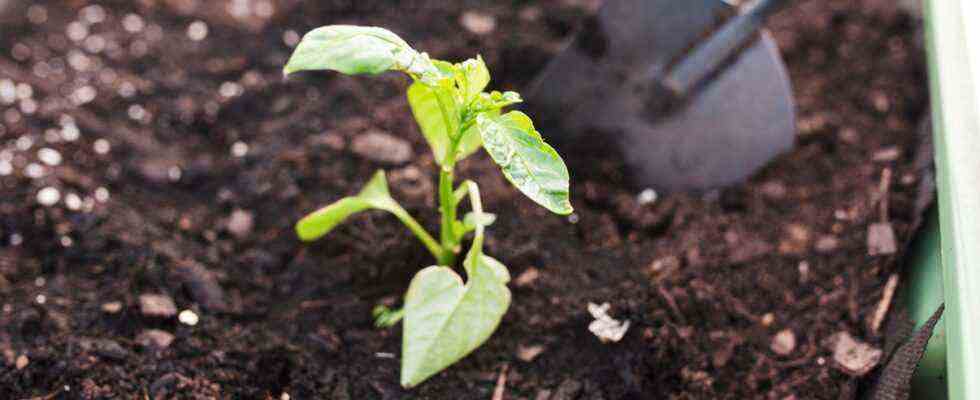When to sow
Because peppers and chili peppers have requirements for temperature and one specific growth mode, you have to submit to certain constraints when it comes to cultivating them:
- Originating in South America, peppers and chili peppers have need sun and heat to develop well and have that particular taste that characterizes them so much. As soon as the temperature drops below 13 ° C, their growth stops. The ideal temperature is around 24 ° C. For this reason, you should proceed with the sowing in a heated interior or in a mini-greenhouse between February and April depending on what you want to do next:
- if you want plant them in a greenhouse, you can proceed to sowing in February to transplant them in April;
- if they are intended for growing in the ground outside, it is preferable to sow them in March so that they can be transplanted when the last frosts have passed.
- Because these are plants that grow quite slowly, you must favor sowing early in the year.
- You will have to be patient, because between the moment you sow them and the moment when the first harvests will take place, you have to count between 20 and 24 weeks.
How to sow peppers and peppers?
Without forgetting that a constant heat will be essential at all times, here are some tips for sowing peppers or peppers:
- You can first place the seeds on a damp cotton and leave them in your refrigerator overnight. You will thus facilitate the germination of your seeds.
- You can then sow them in a bin, buckets or in egg cartons. Count between 3 and 4 seeds to obtain a foot of pepper.
- Make sure you scatter the seeds well and then cover them with potting soil.
- As soon as your seedlings are a few centimeters tall and have at least two leaves, you can select the most vigorous and transplant them into a container.
- Be sure to maintain the soil always wet by watering your seedlings with a sprayer.
- If you don’t have a greenhouse and are doing your seedlings indoors, be sure to choose them a spot in the full light, without placing them in direct sunlight so as not to risk burning them, and to keep them warm throughout the process.
If you live in mainland France, it is not worth trying to sow your peppers or peppers directly in the ground, it does not work.

Transplant your plants
As soon as your plants are ready to be transplanted, and all the risk of frost has been eliminated, you can plant them in the ground. Here are some tips for successfully completing this step:
- Before planting them, it is recommended to” bring compost, preferably not too rich in nitrogen.
- Favor a location in full sun. You can also plant them at the foot of a wall. In this way, at night, the wall will restore the heat accumulated during the day and protect your plants from possible drops in temperature.
- Plan a spacing of 50 cm between plants.
- It is then recommended to install thick mulch to retain heat and humidity.
- Proceed to regular watering, corn moderate throughout the culture. However, be careful not to wet the leaves to avoid diseases such as mildew to which peppers and peppers are sensitive.
Peppers and peppers remain fairly delicate crops because of their high heat requirements. Nevertheless, you can count on a harvest of 8 to 12 fruits per plant. To harvest the fruits, it is advisable to cut them with a knife at the level of the peduncle. If you can harvest and eat the peppers and chilies while they are still immature, they will keep better if you wait until they are ripe to harvest them.
Harvest the seeds for your next sowing
If you want collect seeds in order to cultivate them the following year, it suffices to choose a mature and vigorous fruit. Here’s how to do it:
- Core the bell pepper Where chilli to access and collect the seeds.
- Soak them in a large enough container and stir with your fingers. This will allow you to clean the seeds of any leftover fruit that may have stuck to them.
- Place the seeds on a kitchen towel or paper towel to dry them.
- Once they are completely dry, you can place in a kraft paper bag or in a jar, indicating which seeds it is.
- Keep them at shelter from the light and to ambient temperature.

